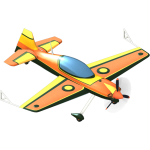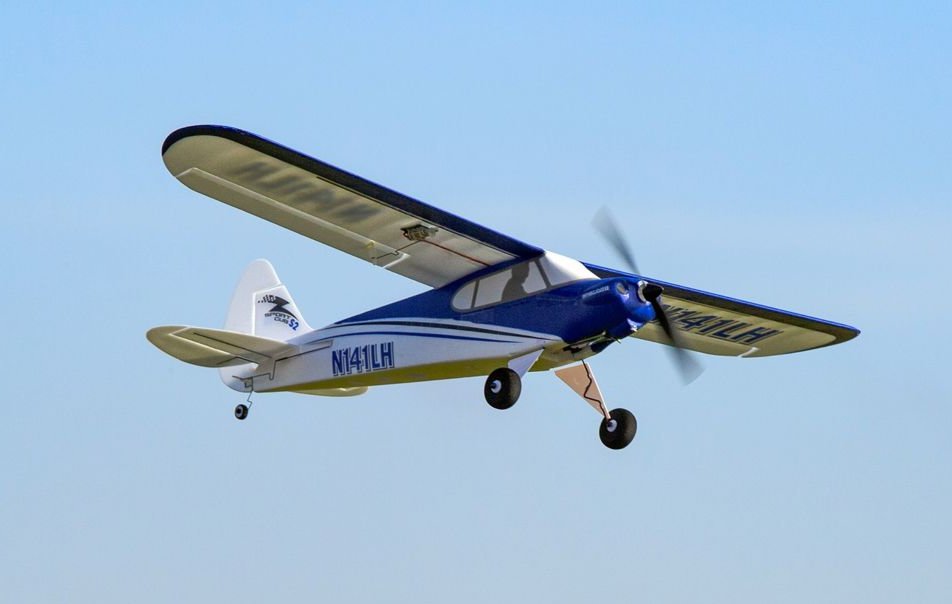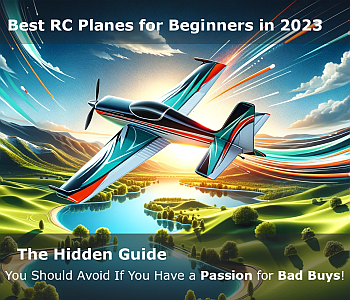Learning to Fly RC Planes – Lesson 4: Starting to get the hang of this
Prerequisites: You’ve taken your first few flights. You can fly a circuit reasonably well. Your landings are still a work in progress but are getting a little better all the time.
Objectives: Gain some spatial awareness for altitude. Learn how to exchange altitude for speed. Continue refining control. Practice some low-level passes.
We are now going to talk about how to use and vary your altitude whilst flying. Up til now, the focus has been on getting to a safe altitude, flying circuits, and landing. What we have been doing until now is looking at a three-dimensional activity (flying) and reducing most of it to two dimensions. This was done intentionally cause there was already a lot to think about.
Without getting to bogged down in technical details altitude is potential energy – you store energy in altitude (by gradually climbing to a height) which you can then “exchange” for more airspeed. Obvious enough isn’t it, but perhaps you haven’t thought of it that way before.
Your trainer is capable of doing some weird and wonderful maneuvers (yes – your trainer) but the thing that is typically lacking is enough energy, or airspeed to do them. This isn’t a problem though – provided you have stored enough potential energy in altitude you can always exchange altitude for speed. You might have even done this already to get your plane to loop in the last exercise.
When we give our planes extra speed there are all sorts of flow on effects to the plane itself. For example, all of the trainers will have a strong tendency to “balloon” up once they have enough airspeed. Their wing and the high airspeed will make them want to climb until they start to reach their normal flight speed again.
So, as you are doing your next few flights start bringing the plane down from altitude and just getting a feel for the way speed builds up in the aircraft. Starting at a cruising altitude of 30metres (about 100feet) and once you are sure there are no trees or other objects in your path dive her for 5-10 meters at a time. At the bottom of the dive let the plane naturally pull up (so just release elevator) perform a gentle turn, and just note how the plane handles differently with the extra airspeed. Don’t come below 15 meters on these dives (that’s the next exercise). Do be gentle on the controls – feed in the input slowly – otherwise, you might cause the plane to do one of those extreme maneuvers which might not be helpful so close to the ground.
Once you have lost the airspeed, climb back up to 30 meters. Repeat.
You may have noticed I knocked 20metres of your cruising altitude. By now you should be getting a reasonable feel for the plane in the air and hopefully, it doesn’t feel like you are barely in control anymore. However, you may still get yourself into trouble if you aren’t thinking ahead of the plane. So, keep on thinking about where the plane will be in 5 seconds time, and what you need to do *now* to avoid unpleasant ends.
Another thing to start work on is your finesse on the controls. Hopefully by now your heart is doing less than 140 beats per minute when you fly, which is great cause it means we can start work on that stabbing motion you use to control the plane (you may already have more finesses than that – so sorry those of you that feel slighted by that comment 😎 Control inputs to an RC plane can be quick, but they need to be smooth and that is the key. So, as you are flying focus on giving inputs smoothly. You will actually see the difference in the way the aircraft behaves between violent stabs on the controls and quick but smooth use of the controls.
So practice turning faster, slow, diving quickly (above) and slowly.
Once you have all this under control we are going to do some low-level high-speed passes. We are going to make them high speed so that the plane has plenty of energy, and at the end of the pass can pull back up to a safe cruising altitude. A low-speed pass is something you will do eventually, but you might get yourself into trouble because you don’t have enough power to get altitude to turn at the end of the pass and end up in some trees, or touch a wing tip while trying to turn.
So, with the plane at about 20metres altitude, and at full throttle, with the plane coming towards you (with you in the middle of the field and plenty of space around you) put her into a moderate dive and hold her there as she picks up airspeed until she is about 5metres from the ground (about two and a half people high). Use some finesse on the elevator to hold it there for 1,2,3 seconds, and then climb away. If you feed in too much down elevator, just pull up straight away. Climb back up to a safe altitude, get the throttle back to the 2/3rd position, go around and get ready to do it again.
Picking the Battery Drain Point
By now you will have flattened a few batteries, and maybe even ended up in a spot of bother when you lost batteries a bit close to the ground. While you are still figuring out when the battery starts to go here is a simple rule. If you are going to do some high speed, or even low speed passes, do them shortly after you first take off, when the battery is fully charged.
Losing power close to the ground severely limits your options, so try to make sure you are at reasonable altitude at the tail end of your battery.
In terms of picking the point when your battery is going to deplete you will begin to get a sense for this. At the first point when you notice that you aren’t climbing with the same throttle position, you are probably getting the first indication that you will have to land shortly. When you start to get this warning, send your plane out and start to “loiter”, going backward and forwards across the wind at approximately the place you are going to start your landing from.
Once you find you can’t sustain altitude it is time to set up for your landing. If you have been loitering the plane in the right place you should be able to gradually bring her down. If she is a bit high then do a 270 degree turn into the wind (so turn away from the wind first, coming all the way round to face the wind), otherwise just do a 90 degree turn into the wind, shut the throttle, begin your landing glide. If you have depleted the battery make sure you have enough room to landing. Landing with the wind beats hitting cars or trees, so don’t force the plane down into the wind if there isn’t enough space.
If your plane is too high to start a landing run after turning 270 degrees, then just fly across the wind for one or two more lengths, until the altitude is right to start a landing run.
Next part we will talk about some low-level low-speed flying, and some more aerobatics, as your confidence with the plane in the sky starts to build.




